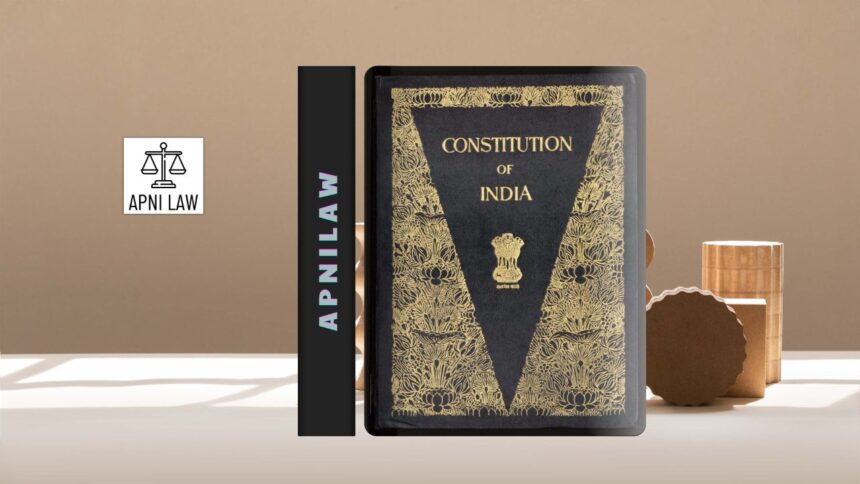Introduction
The Constitution of India stands as the foundation of the world’s largest democracy. Adopted in 1950, it provides a comprehensive framework for governance, ensuring justice, liberty, equality, and fraternity. However, despite being celebrated for its inclusiveness and adaptability, the Indian Constitution has faced continuous criticism since its inception. Two major points of debate often emerge: Is the Constitution too detailed? Is it too rigid to allow for quick adaptation to changing times?
Unlike many other constitutions, the Indian Constitution is one of the lengthiest in the world. It contains detailed provisions covering almost every aspect of governance, from fundamental rights to emergency powers. Critics argue that such detailing creates complexity and makes it less flexible. Others counter that these features strengthen democracy by ensuring clarity and preventing misuse of power. To understand these debates, it is essential to examine why the framers opted for such detail, the level of rigidity in the amendment process, and whether these characteristics have helped or hindered governance.
Why Is the Indian Constitution So Detailed?
When India gained independence in 1947, the framers of the Constitution faced unique challenges. The country was not only vast and culturally diverse but also deeply divided along linguistic, religious, and regional lines. Unlike the United States or the United Kingdom, India required a governance framework that could address these complexities in detail.
The framers believed that ambiguity could lead to conflicts and misuse of power. Therefore, they included specific provisions for almost every aspect of governance, such as legislative procedures, distribution of powers between the Centre and states, language policies, and administrative rules. At the time of adoption, the Constitution had 395 Articles and 8 Schedules, making it the most elaborate written constitution in the world.
This detailing was necessary to bring together former British provinces and princely states under a common legal framework. Without clarity, the transition from colonial rule to a democratic republic could have led to administrative chaos. However, critics argue that this exhaustive nature has made the document bulky and difficult for ordinary citizens to understand.
The Argument of Rigidity: How Flexible Is It Really?
Another common criticism of the Indian Constitution is its perceived rigidity. While it is not as rigid as the U.S. Constitution, which requires a complex process for amendments, nor as flexible as the British Constitution, which Parliament can easily alter, the Indian Constitution maintains a balance between stability and adaptability.
Certain provisions, such as those dealing with federal structure or representation of states, require not just a special majority in Parliament but also ratification by at least half of the state legislatures. This ensures that fundamental features cannot be changed without broad consensus. Critics argue that this process makes the Constitution slow to adapt to modern needs.
However, the reality is different. The Indian Constitution has been amended more than 100 times since 1950. Significant reforms, such as the 42nd Amendment (1976), which introduced fundamental duties, and the 73rd and 74th Amendments (1992), which empowered local governance, show that the document is not inflexible. Therefore, while certain features are deliberately rigid to protect core principles, the overall structure remains flexible enough to accommodate change.
Does Length Lead to Complexity?
One of the most frequent criticisms is that the Constitution’s length and complexity make it inaccessible to the common citizen. With hundreds of Articles and numerous Schedules, the document often requires legal interpretation. Critics argue that a simpler constitution, like that of the United States, would have been easier for people to understand.
However, the framers believed that India’s socio-political conditions demanded precision and detail. A loosely worded constitution might have resulted in conflicting interpretations and misuse of power. For instance, detailed provisions on language policies and minority rights ensured that cultural and linguistic identities were respected, thereby preventing conflicts.
Yet, this complexity has its drawbacks. Ordinary citizens often find it difficult to comprehend their constitutional rights and duties. While legal literacy programs aim to address this gap, the criticism of excessive length remains valid to some extent.
Arguments Supporting Detail and Rigidity
Despite these criticisms, many scholars view the detail and partial rigidity as strengths rather than weaknesses. India’s diversity makes a comprehensive constitutional framework essential. Specific provisions on language, federal relations, and minority protection have helped maintain unity in a multi-ethnic and multilingual society.
Moreover, rigidity in certain areas ensures that temporary political majorities cannot alter the basic structure of the Constitution for short-term gains. This safeguard has been reinforced by the judiciary through the basic structure doctrine, established in the landmark Kesavananda Bharati case (1973).
Therefore, while critics see rigidity as a limitation, supporters consider it a necessary safeguard to preserve democracy and constitutional morality.
Examples of Constitutional Flexibility in Action
Although the Constitution is detailed, it has demonstrated remarkable adaptability over time. For example, the economic liberalization of the 1990s required significant policy changes, which were implemented without disturbing the constitutional framework. Similarly, amendments introducing the Goods and Services Tax (GST) in 2016 transformed India’s tax system without disrupting the overall federal structure.
This shows that the Constitution is not an obstacle to progress but a guiding framework that evolves with the nation’s needs. The balance between rigidity and flexibility ensures both stability and adaptability.
Does Detail Cause Overlap and Confusion?
Another criticism is that excessive detailing has led to overlaps between the Union and state powers. The Seventh Schedule divides subjects into Union, State, and Concurrent Lists, but disputes over jurisdiction are common. Critics argue that a more concise constitution could have avoided such conflicts.
However, the framers preferred clarity over ambiguity. They believed that a well-defined allocation of powers would prevent misuse and ensure smooth functioning of federal relations. While disputes arise, they are often resolved through judicial interpretation, which itself is a sign of constitutional resilience.
FAQ
1. Why is the Indian Constitution criticized for being too detailed?
Because it covers almost every aspect of governance in great depth, making it lengthy and complex compared to other constitutions.
2. Is the Indian Constitution rigid or flexible?
It is a mix of both. While core provisions are rigid to safeguard fundamental principles, other parts can be amended with relative ease.
3. Has the Constitution adapted to modern challenges?
Yes, through more than 100 amendments, it has evolved to address new political, social, and economic realities.
Conclusion
The criticism that the Indian Constitution is too detailed or too rigid reflects both its strengths and its limitations. While its elaborate nature makes it complex, it also provides clarity in a diverse country like India. Similarly, rigidity in certain areas ensures stability and protection of fundamental principles, while flexibility in others allows for necessary reforms.
Far from being a weakness, these features highlight the foresight of the framers, who created a document strong enough to endure time and dynamic enough to adapt to change. The Constitution remains a living document detailed yet adaptable, rigid yet flexible, shaping the destiny of the world’s largest democracy.
For any specific query call at +91 – 8569843472







